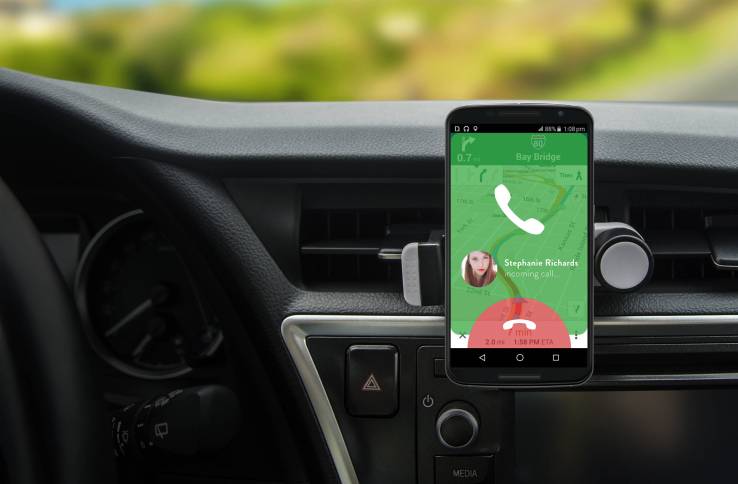

If you’re an Android device owner and also a driver, you may already be familiar with Drivemode: Available on Google Play, it’s one of the most popular apps for use in cars, with more than one million downloads and active users spread across 180 countries. The app is designed to reduce distractions for drivers via an eyes-free interface designed to access smartphone functions like navigation, messaging, calls and more, entirely via voice.
Drivemode just raised $6.5 million in a new Series A round, led by Panasonic, which, among its many talents, is also one of the largest automotive industry suppliers in the world. Panasonic is a strategic investor, and others included in the round include insurance provider Mitsui Sumitomo Insurance via its VC arm, as well as Innovative Venture Fund Investment and Miyako Capital. The nature and source of the funding suggests Drivemode has ambitions well beyond its existing consumer app. Founder and CEO Yo Koga confirms the company is focused on building out additional features for the app through its new partnership with Panasonic, but that it also has other ambitions in the works.
“Obviously, Panasonic wants to utilize our popularity as a driving app when working with automakers,” Koga explained. “So what we’re working on now is integrating their infotainment systems with our consumer app so that we can work with hardware products like display audio or basic audio, consumers have a lot more to users via the consumer app. At the same time, a lot of automakers are also interested in white label stuff as well, so that we’re working on separately, as well.”
Companies seem eager to partner with Drivemode; Koga says there’s a big backlog of deal pipeline it could pursue, but with a team of only eight people much of that has been on hold. What, then, is stopping other companies from stepping up and filling the demand either internally or via alternate partners? Google’s own Android Auto app on the Play Store enjoys worse reviews than Drivemode, for starters, which is a good indicator that Koga’s right when he points out how hard it is to make an app that does what Drivemode can do, and do it well.
“Drivemode is an extremely technical app,” he said. “A lot of automotive companies try to replicate what we’re doing, and a lot of hardware companies try to do this, too. Hardware companies, for example, can have fantastic hardware, but figuring out the hardware experience is the toughest part. Even simply answering incoming Facebook messages by voice is super technical, and not many can do it, at least with the right interface.”
Drivemode has been working on the problem with actual user feedback since the app first launched in beta in 2014, and continues to iterate on its voice-based interaction model. It’s also in regular contact with the National Highway Traffic and Safety Administration (NHTSA), and Koga says they see eye-to-eye with the federal body on where in-car use of devices and services are headed in terms of maximizing safety.
Meanwhile, he argues their value to potential automaker and supply-side partners will only grow, given the direction in which the industry is headed.
“What’s going on in the automotive industry is that software will be key from now on,” Koga explained. “The problem with that is that automakers and suppliers don’t have direct access to the users, which is why they’re trying to come up with new standards like SDL [SmartDeviceLink] and others to figure out ways to connect with users. Getting data, and then liberating the data, in the automotive industry will be the key concern for [automakers].”
Drivemode’s free, in-app purchase supported model means it already has one of the largest install bases of any third-party software for use on smartphones in cars, which is bound to interest carmakers. Its range of features mean it can also reveal a lot about user habits, providing much more insight about customer behavior than carmakers, other than tech-centric players like Tesla, can generally expect to receive.

